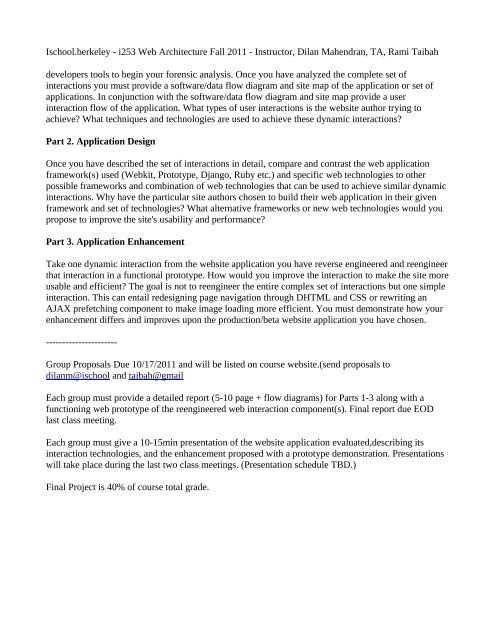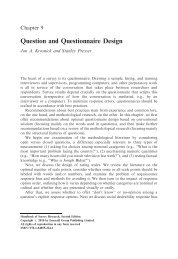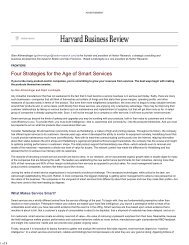Final Project: Web Application Evaluation, Design, and ... - Courses
Final Project: Web Application Evaluation, Design, and ... - Courses
Final Project: Web Application Evaluation, Design, and ... - Courses
You also want an ePaper? Increase the reach of your titles
YUMPU automatically turns print PDFs into web optimized ePapers that Google loves.
Ischool.berkeley - i253 <strong>Web</strong> Architecture Fall 2011 - Instructor, Dilan Mahendran, TA, Rami Taibah<br />
developers tools to begin your forensic analysis. Once you have analyzed the complete set of<br />
interactions you must provide a software/data flow diagram <strong>and</strong> site map of the application or set of<br />
applications. In conjunction with the software/data flow diagram <strong>and</strong> site map provide a user<br />
interaction flow of the application. What types of user interactions is the website author trying to<br />
achieve? What techniques <strong>and</strong> technologies are used to achieve these dynamic interactions?<br />
Part 2. <strong>Application</strong> <strong>Design</strong><br />
Once you have described the set of interactions in detail, compare <strong>and</strong> contrast the web application<br />
framework(s) used (<strong>Web</strong>kit, Prototype, Django, Ruby etc.) <strong>and</strong> specific web technologies to other<br />
possible frameworks <strong>and</strong> combination of web technologies that can be used to achieve similar dynamic<br />
interactions. Why have the particular site authors chosen to build their web application in their given<br />
framework <strong>and</strong> set of technologies? What alternative frameworks or new web technologies would you<br />
propose to improve the site's usability <strong>and</strong> performance?<br />
Part 3. <strong>Application</strong> Enhancement<br />
Take one dynamic interaction from the website application you have reverse engineered <strong>and</strong> reengineer<br />
that interaction in a functional prototype. How would you improve the interaction to make the site more<br />
usable <strong>and</strong> efficient? The goal is not to reengineer the entire complex set of interactions but one simple<br />
interaction. This can entail redesigning page navigation through DHTML <strong>and</strong> CSS or rewriting an<br />
AJAX prefetching component to make image loading more efficient. You must demonstrate how your<br />
enhancement differs <strong>and</strong> improves upon the production/beta website application you have chosen.<br />
----------------------<br />
Group Proposals Due 10/17/2011 <strong>and</strong> will be listed on course website.(send proposals to<br />
dilanm@ischool <strong>and</strong> taibah@gmail<br />
Each group must provide a detailed report (5-10 page + flow diagrams) for Parts 1-3 along with a<br />
functioning web prototype of the reengineered web interaction component(s). <strong>Final</strong> report due EOD<br />
last class meeting.<br />
Each group must give a 10-15min presentation of the website application evaluated,describing its<br />
interaction technologies, <strong>and</strong> the enhancement proposed with a prototype demonstration. Presentations<br />
will take place during the last two class meetings. (Presentation schedule TBD.)<br />
<strong>Final</strong> <strong>Project</strong> is 40% of course total grade.
















